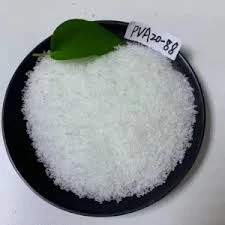Understanding Cellulose Ether A Versatile Material for Diverse Applications
In recent years, cellulose ether has garnered significant attention across various industries due to its remarkable properties and versatility. This compound, derived from cellulose, is a modified form of natural polymer obtained from plant cell walls. With applications spanning numerous sectors including pharmaceuticals, food, cosmetics, and construction, the demand for cellulose ether products continues to grow.
What is Cellulose Ether?
Cellulose ether is created through the reaction of cellulose with alkali and etherifying agents. The result is a compound that retains the inherent properties of cellulose while acquiring new characteristics that enhance its functionality. This transformation allows cellulose ether to dissolve in cold water and form a gel-like structure, making it an ideal thickening agent, gelling agent, and stabilizer. Depending on the substitution process and the structure of the cellulose, various types of cellulose ethers are produced, including methylcellulose (MC), hydroxypropyl methylcellulose (HPMC), and carboxymethyl cellulose (CMC), each possessing unique properties and applications.
Applications of Cellulose Ether
1. Pharmaceuticals In the pharmaceutical industry, cellulose ethers are widely used as excipients, which are inactive substances that help deliver drugs effectively. HPMC, for instance, is used as a binder in tablet formulations and as a controlled-release agent, ensuring that medications are released at the right rate within the body. Additionally, cellulose ethers can also improve the stability of liquid formulations.
2. Food Industry Cellulose ethers are popular in the food sector for their thickening, gelling, and emulsifying properties. CMC is commonly used as a food additive, providing texture and improving the mouthfeel of products like ice creams, sauces, and dressings. It also acts as a stabilizer, keeping ingredients evenly distributed and enhancing shelf life.
buy cellulos ether

3. Cosmetics and Personal Care The cosmetic industry benefits from cellulose ethers as they help achieve the desired viscosity in creams, lotions, and gels. They are often found in products like shampoos and conditioners due to their ability to impart a smooth texture and enhance the overall application experience. Moreover, cellulose ethers are non-toxic and biodegradable, making them suitable for eco-friendly formulations.
4. Construction In construction materials, cellulose ethers are used as additives to improve workability and adhesion. They enhance the performance of cement-based products, such as tile adhesives, joint compounds, and plasters, by increasing the water retention capacity, which ensures better hydration of the cement and leads to stronger, more durable structures.
5. Agriculture Recent innovations have seen cellulose ethers applied in agriculture as well, particularly in coatings for seeds that help control nutrient release and improve germination rates.
Buying Cellulose Ether
When it comes to purchasing cellulose ether, it is essential to source from reputable suppliers to ensure product quality and consistency. The needs of your specific application will determine the type of cellulose ether required, whether for pharmaceutical, food, cosmetic, or industrial use. It’s crucial to consult with manufacturers or distributors regarding the best type to meet your precise demands.
Conclusion
Cellulose ether is undoubtedly a remarkable compound with multifaceted applications that demonstrate its critical role in various industries. As research advances and the demand for sustainable materials increases, the importance of cellulose ether will likely continue to grow. For businesses looking to innovate and improve their products, investing in high-quality cellulose ether can be a game-changer, offering performance and versatility that few other materials can match.
-
A Comprehensive Guide to Methyl Ethyl Hydroxyethyl Cellulose: Applications and Industry InsightsNewsNov.24,2025
-
Understanding Methyl 2 Hydroxyethyl Cellulose: Uses, Benefits & Industry InsightsNewsNov.24,2025
-
Hydroxyethyl Methyl Cellulose HEMC: Industrial Uses, Benefits & Future TrendsNewsNov.23,2025
-
HEMC Cellulose: Versatile & Sustainable Industrial Polymer | YoungcelNewsNov.23,2025
-
Methyl Hydroxyethyl Cellulose: Versatile Building Block for Industry & SustainabilityNewsNov.23,2025
-
CAS 9032 42 2: Understanding Polyvinyl Alcohol's Impact on Industry & SustainabilityNewsNov.22,2025




